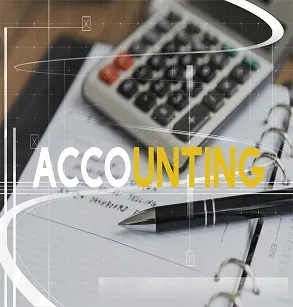Are you interested in Accounting and Finance? Then this is the perfect course for you. Learn how to manage Accounting professionally!
400 Hours Duration
Completion Certificate
No Entry Requirements
Endorsed Courses
Get Your Course Now
Only 1 Day Left at this price
Discount 80% £560.00


Course Overview
Professional Course in Finance and Accounting
Accounting and finance play an important role in the management of any organization – Profit-making or Charity. Indeed, without deep knowledge of the rules, strategies, processes of accounting and finance, many organisations have floundered and failed.
CPD’s Advanced Diploma in Accounting and Finance provides the most interesting platform for candidates with no knowledge of accounting. This professional course in finance and accounting also accommodates candidates with prior knowledge of this area of study. The Diploma in Accounting and Finance course provides candidates with an in-depth understanding of financial analysis and other core accounting skills, which positions them as leaders in the global business world.
The flexibility of this course allows even candidates with undergraduate degrees in arts, economics, law, business, science, and engineering, as well as those with some background in accounting and finance to have a fine grasp of the course. Our professional courses in finance and accounting provide an incredible opportunity for candidates to learn at their own pace, without being encumbered with deadlines and schedules. The practical-based assignment also aids candidates in grasping core practical skills of accountancy. With QLS on completing the course, candidates can pride themselves as having the skills and knowledge needed to excel in any accounting role.
The Advanced Diploma in Accounting and Finance begins with a broad introduction to the challenging of accounting and moves on to discuss the roles of accountants and core accounting concepts and standards. Midway into the course, Journals and subsidiary Books, Profit and Loss accountants and Balance Sheet are explained. The interesting Cash flow Statements, Budgeting, and Financial Management are also expounded. The course then concludes with a look at various investment methods.
Who Should Take This Course
- Graduates interested in pursuing a higher degree in accounting and finance or any other related field of study.
- Accountants looking to deepen their knowledge of accounting and finance
- Business owners seeking to understand simple cash flow to effectively manage their business.
- People who already have pre-existing knowledge but wish to expand their knowledge and understanding in key areas of interest.
- Anyone who wishes to acquire a solid foundation in accounting and finance.
Course Syllabus
This course consists of the following units:
Module 1: Foundations of Managerial Accounting
This module introduces the role of managerial accounting in business decision-making and explores its importance in planning, control, and performance measurement. Learners develop a solid base in management accounting concepts.
Module 2: Accounting Principles, Terminology & Bookkeeping Basics
Students study the essential principles, terminology, and methods used in accounting while learning practical bookkeeping processes. The module explains how financial data is recorded, organized, and managed effectively.
Module 3: Financial Statements & Performance Reporting
This section covers the preparation, interpretation, and use of financial statements, including balance sheets, income statements, and cash flow reports. Learners gain skills in analysing performance and presenting financial results.
Module 4: Cost Classification, Behaviour & Break-Even Analysis
Learners explore cost structures, fixed and variable costs, and the relationship between cost, volume, and profit. The module also explains break-even analysis as a vital tool for decision-making.
Module 5: Budgeting, Forecasting & Variance Analysis
This module highlights how businesses prepare budgets and forecasts to guide operations and achieve financial goals. Students also learn to conduct variance analysis to evaluate performance and control costs.
Career Path
An advanced diploma in Accounting and Finance opens up diverse job opportunities. With an advanced diploma in this course, you can become a chartered accountant, chartered management accountant, company secretary, chartered public finance accountant, stockbroker or a forensic accountant. You can also apply your practical knowledge of finance as a data analyst, purchasing manager, economist, business development manager, retail banker, management consultant or as a tax adviser. Average potential earning for those in the field of accounting is between £56,000 and £110,000.
Endorsement
At the end of this course successful learners will receive a Certificate of Achievement from the Quality Licence Scheme and a Learner Unit Summary (which lists the components the learner has completed as part of the course).
This course and/or training programme has been endorsed by the Quality Licence Scheme for its high-quality, non-regulated provision and training programmes. This course and/or training programme is not regulated by Ofqual and is not an accredited qualification. Your training provider will be able to advise you on any further recognition, for example progression routes into further and/or higher education. For further information please visit the Learner FAQs on the Quality Licence Scheme website.
FAQs
What is an accounting and finance diploma
An accounting and finance diploma provides foundational to intermediate knowledge in financial reporting, budgeting, and business analysis, preparing learners for roles in corporate finance, bookkeeping, or audit.
What is a diploma in finance accounting system
It is a qualification that teaches students how to manage and operate financial systems, maintain records, use accounting software, and understand principles of taxation and auditing.
What is the study of finance and accounting
It involves understanding how money is managed within businesses, including topics like budgeting, investments, financial analysis, tax planning, and compliance with financial regulations.
Which diploma in accounting is best
The best diploma depends on your career goals. QLS Level 4 is ideal for individuals seeking practical, in-depth skills in financial reporting, budgeting, and risk analysis, especially in supervisory or mid-level finance roles.
Is accounting and finance a good career
Yes, accounting and finance offer stable, high-demand career paths with opportunities in every industry. Roles include financial analyst, accountant, auditor, payroll officer, and more.
What topics are covered in the QLS Level 4 Diploma
The course covers key areas such as GAAP, the accounting cycle, budgeting, financial statement analysis, risk evaluation, and digital budgeting tools.
Is this course suitable for beginners in finance
Yes. The course starts with core concepts and builds up to advanced topics, making it suitable for both beginners and those looking to expand their financial knowledge.
Will I learn how to analyse financial statements in this course
Absolutely. Units 1 and 2 focus on understanding financial reports, interpreting annual statements, and applying financial ratios for risk assessment.
Is the course recognised and accredited
Yes. Upon completion, learners receive a CPD-accredited certificate from OHSC, plus a CPD Courses Certificate of Completion, validating your skills and knowledge at Level 4.
Can this course help me progress to higher qualifications
Yes. This diploma provides a solid foundation for further studies in accounting or finance, including Level 5 diplomas or professional certifications like ACCA or CIMA.


Your Certificate, Delivered Instantly & Professionally
Finish your course and instantly download your PDF certificate to share or showcase. Prefer a hard copy? We’ll send you a beautifully printed version, ready to frame and display with pride!
Recognised CPD Certification
Earn a fully accredited CPD certificate that’s respected across industries.
Instant Download & Print
Download your certificate immediately after completing your course – perfect for your records or CV.
Printed Copy Included
You’ll also receive a professionally printed certificate delivered straight to your door – ideal for framing and display.

Verifiable Unique ID
Each certificate includes a unique ID number, easily verifiable by employers.
High-Quality Print
Enjoy a professionally printed certificate that looks impressive and feels premium.
Completion dates included
Your certificate clearly displays the completion date, making renewal planning simple.
What our Students say
Celebrating our Clients and Partners





























